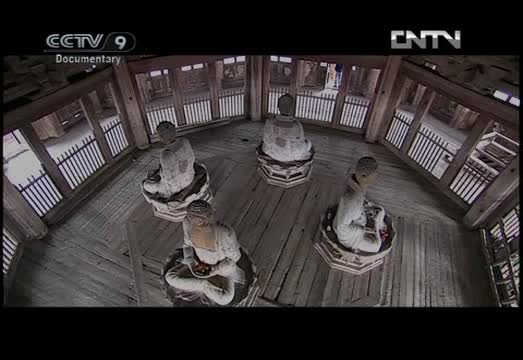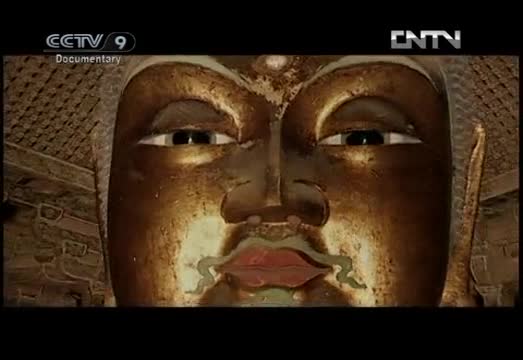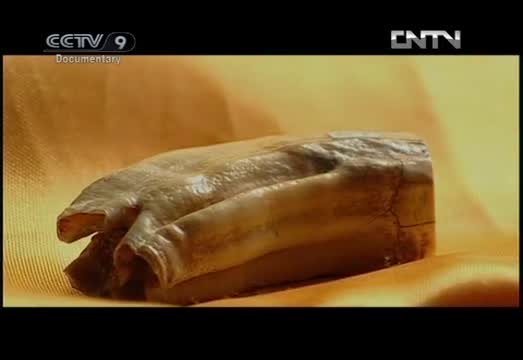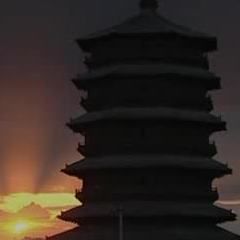This is a four-part series of short, 20-minute documentaries about the famous Sakyamuni Pagoda in Ying County, Shangxi Province, China, which is the tallest wooden Pagoda in the world. As I cannot make a playlist out of the films I have had to embed all four of them separately here, with an introduction to each.

The first of the films looks at the construction of the Pagoda believed to have been commissioned by a Liao Empress around 1056. At 67 metres high, it is about the size of a 20-story block of flats and not a single nail has been used in its construction. Rather it is upheld by mortise and tenon joints of different kinds, and wooden columns. It is so stable it has withstood numerous earthquakes since its construction.
The Pagoda is octagonal, and from the outside it appears to have five floors, but inside there are, in fact, nine stories to the building. There is a large Buddha Sakyamuni statue in the first hall, and it is this which gives the name to the temple. The name of the temple has changed over the years, first being called Baogong Temple, which was later changed to Foogong Temple, and it has also been known simply as The Wooden Pagoda but it is popularly known as the Sakyamuni Temple.
if the video does not appear on the page, try reloading the page; and if that doesn’t work, leave a comment so I can update the page (the comment is not published)
The second of the films looks at what factors have contributed to the survival of the Pagoda for nearly a millenium. First of all it has a very robust construction, with mortise and tenon joints and brackets, which allow it to absorb much of the motion caused by winds and earthquakes by swaying slightly. It is pointed out that all the other buildings in the area are only one story high, owing to the frequency of earthquakes in the area, but still the Pagoda has survived.
Secondly, presumably by luck, it has escaped fire; thirdly, the other great destroyer of wooden structures, insects, are notably few and far between, maybe because of the swallow poulation that resides there; and fourthly the structure has been maintained by the local Buddhist population, which sees to its cleaning and upkeep.
if the video does not appear on the page, try reloading the page; and if that doesn’t work, leave a comment so I can update the page (the comment is not published)
The third of the series investigates the various theories about who exactly built the Pagoda, which, if it were known, might also explain why it was built in such a remote area. Although there is no certain answer it does appear most likely to have been built by one of the three Empresses in the Liao Dynasty, which was led by the ethnic Khitans, not by the Han.
if the video does not appear on the page, try reloading the page; and if that doesn’t work, leave a comment so I can update the page (the comment is not published)
The fourth programme in the series tries to discover the treasures that a study of its architecture seemed to hint were hidden in the Pagoda. The first opening came during the disastrous Cultural Revolution (here surprisingly shown as misguided). Many of the treasures in the Pagoda were destroyed during this time, until Premier Zhou-en Lai issued an order for the destruction to stop (which may have been the only thing that stopped the Pagoda itself from being destroyed).
Meanwhile, however, a great many irreplaceable artifacts had been destroyed, including early printed sutras. But it seems that some other things taken away at the time, perhaps to protect them, and were replanted in the Pagoda in later times. They didn’t seem so valuable, just old bones and coins. But it turns out they were Buddha Tooth Relics.
About eight years later a failed looting attempt by a local carpenter revealed more relics hidden inside one of the Buddha statues, and this confirmed the theory of the cleverly designed Pagoda, which, when you knew how to read it, was indicating where the treasures were.
if the video does not appear on the page, try reloading the page; and if that doesn’t work, leave a comment so I can update the page (the comment is not published)







Hi, thanks for the blog and videos! Could you pls tell me where can I watch the videos, other than YouTube and similar sites that cannot be reached from Mainland China? Thank you very much!
I think the only way is to get a VPN that is not blocked by the Chinese government so you can bypass their restrictions.